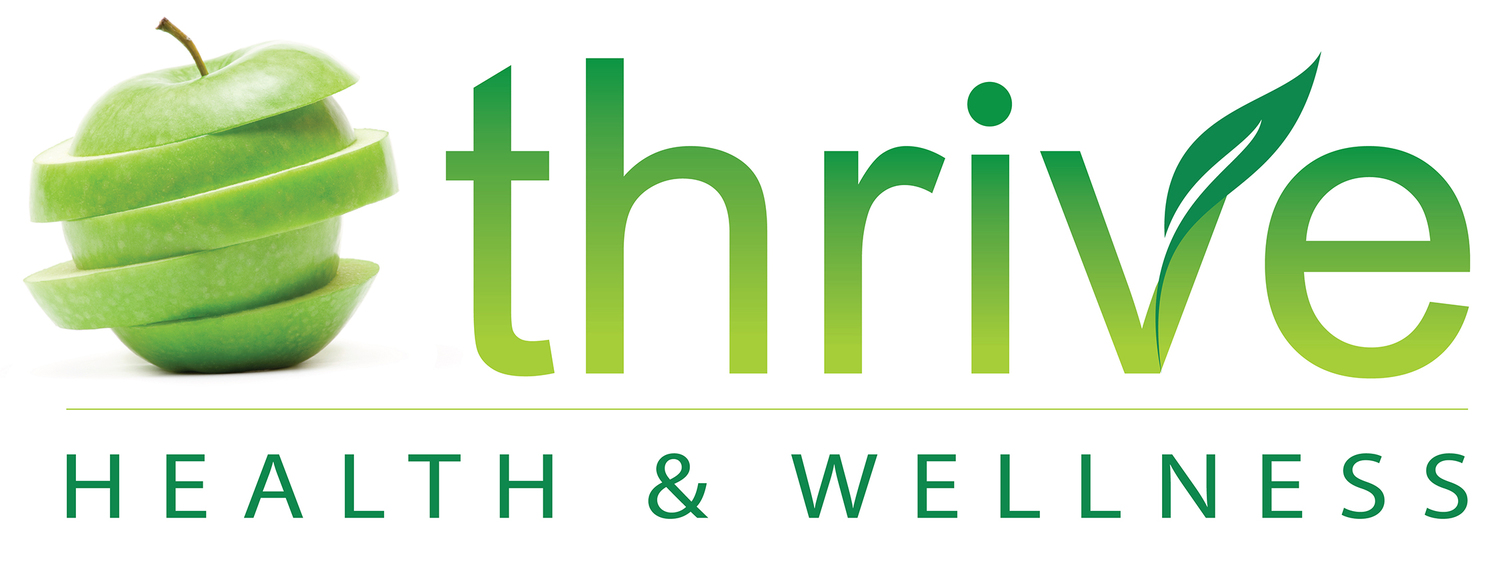thrive blog
tips, recipes and info to help you live healthier
How to Stay Healthy and Focused on Your Goals During the Holiday Season (Without Missing Out on the Fun!)
The holiday season is a time of joy, connection, and celebration — but it can also feel like a minefield for anyone trying to stay committed to their health goals. Between the endless parties, rich foods, late nights, and festive drinks, it’s easy to feel like all your progress goes out the window by New Year’s Day.
But here’s the truth: you can enjoy the holidays and stay healthy. The key is balance, mindfulness, and a little preparation. Let’s explore some realistic, holistic ways to stay on track — and actually enjoy this special time of year.
The holiday season is a time of joy, connection, and celebration — but it can also feel like a minefield for anyone trying to stay committed to their health goals. Between the endless parties, rich foods, late nights, and festive drinks, it’s easy to feel like all your progress goes out the window by New Year’s Day.
But here’s the truth: you can enjoy the holidays and stay healthy. The key is balance, mindfulness, and a little preparation. Let’s explore some realistic, holistic ways to stay on track — and actually enjoy this special time of year.
1. Shift Your Mindset: Progress, Not Perfection
The holidays aren’t about rigid rules or deprivation — they’re about connection, gratitude, and joy. When you allow yourself to enjoy a few treats mindfully, you’ll avoid the all-or-nothing thinking that often leads to guilt or overindulgence.
Tip: Before heading into a party or family dinner, remind yourself: “I choose what nourishes my body and my soul.” That includes both the salad and the shortbread cookie if that’s what brings you joy.
2. Anchor Your Day with Whole, Nourishing Foods
You can absolutely enjoy festive foods, but start each day with a foundation of nourishment. Think of every meal as an opportunity to give your body what it truly needs: protein, fibre, healthy fats, and hydration.
Try this:
Begin your day with a smoothie packed with greens, berries, chia seeds, and a good protein source.
Have a balanced meal before going out — it’ll stabilize your blood sugar and reduce cravings later.
Stay hydrated! Sometimes that “hunger” at the buffet is really thirst in disguise.
3. Keep a Routine (But Make It Flexible)
The holidays can throw off our schedules, but maintaining a few simple habits helps your body stay grounded.
Holistic habits to maintain:
Morning rituals: A few deep breaths, journaling, or lemon water before your day begins.
Movement: Even a 20-minute walk or quick stretch counts — consistency matters more than perfection.
Sleep: Prioritize rest whenever you can. Your energy, mood, and digestion will thank you.
4. Mindful Indulgence: Savour the Treats
You don’t have to say “no” to everything. Instead, choose what’s worth it to you and enjoy it fully.
Practice mindful eating:
Slow down and really taste your food — notice the textures, smells, and flavours.
Put your fork down between bites.
Stop when you feel comfortably satisfied, not stuffed.
When you eat with awareness, you’re more likely to feel content and less likely to overdo it.
5. Be Smart About Holiday Drinks
It’s easy for calories (and sugar) to sneak in through cocktails and festive beverages. Alternate alcoholic drinks with water or sparkling water with lime. You’ll stay hydrated and avoid the energy crash later.
Healthy swaps:
Mulled wine made with less sugar
Kombucha mocktails
Vodka soda with citrus
Herbal teas for cozy evenings in
6. Set Intentions, Not Restrictions
Rather than saying, “I won’t eat sugar,” try “I’ll nourish my body with wholesome foods most of the time.”
Intentions feel empowering and sustainable — restrictions feel punishing.
Examples of healthy holiday intentions:
“I’ll move my body every day in a way that feels good.”
“I’ll focus on connection and gratitude rather than stress.”
“I’ll enjoy my favorite holiday treats mindfully and guilt-free.”
7. Support Your Mind and Body with Self-Care
Stress can take a toll on your health faster than a slice of pie ever could. Take time to rest, reset, and breathe.
Self-care ideas:
A warm bath with Epsom salts
A walk in nature
A digital detox day
Journaling what you’re grateful for
Saying “no” when you need to protect your peace
Remember: Health Is About Harmony
The holidays come once a year — they’re meant to be enjoyed. When you approach this season with balance, intention, and self-compassion, you’ll find that you can celebrate and stay aligned with your goals.
Let yourself laugh, rest, indulge, and nourish. You deserve it.
Thriving Through the Time Change: How to Boost Your Mood, Energy, and Routine During the Darker Months
As the clocks fall back and the days grow shorter, many of us feel the shift — physically, mentally, and emotionally. The darker mornings and early sunsets can disrupt our sleep, appetite, and motivation. It’s no wonder that this time of year can bring on sluggishness, mood dips, and even symptoms of seasonal affective disorder.
But here’s the good news: with a little awareness and intention, you can support your body and mind naturally through this transition. Here’s how to boost your mood, stay energized, and keep your routine — even when the sun seems to vanish too soon.
As the clocks fall back and the days grow shorter, many of us feel the shift — physically, mentally, and emotionally. The darker mornings and early sunsets can disrupt our sleep, appetite, and motivation. It’s no wonder that this time of year can bring on sluggishness, mood dips, and even symptoms of seasonal affective disorder.
But here’s the good news: with a little awareness and intention, you can support your body and mind naturally through this transition. Here’s how to boost your mood, stay energized, and keep your routine — even when the sun seems to vanish too soon.
1. Honour Your Body’s Natural Rhythm
The time change can throw off your circadian rhythm — your body’s internal clock. To help it readjust:
Stick to consistent sleep and wake times. Even on weekends. Routine helps your hormones (especially melatonin and cortisol) rebalance.
Get light early in the day. Step outside within 30–60 minutes of waking. Morning light exposure signals your brain to wake up, boosts serotonin, and helps regulate melatonin production for better sleep at night.
Dim lights at night. Reduce screens and bright lighting at least an hour before bed. Try amber light or candles for a cozy evening wind-down.
2. Move — Even When You Don’t Feel Like It
Shorter days often mean less activity, which can feed into low energy and mood dips. Movement is one of the most powerful natural antidepressants.
Aim for 20–30 minutes of movement daily. It doesn’t have to be intense — walking, stretching, dancing in your kitchen, or gentle yoga all count.
Get outdoors when possible. Even on cloudy days, natural light exposure boosts mood-regulating neurotransmitters like serotonin and dopamine.
Try rhythmic movement. Walking, cycling, and swimming have a meditative quality that helps calm the nervous system.
3. Nourish Your Energy and Mood with Food
Your diet can deeply influence how you feel during the darker months. Focus on foods that stabilize blood sugar, support brain chemistry, and nourish your nervous system.
Key nutrients and foods to include:
Omega-3 fats: Found in salmon, sardines, chia, flax, and walnuts — essential for mood and brain health.
Vitamin D: Often low in winter; consider a supplement and include D-rich foods like fortified plant milks, eggs, and mushrooms exposed to sunlight.
Complex carbs: Sweet potatoes, oats, quinoa, and lentils help support serotonin production and keep energy steady.
Magnesium-rich foods: Leafy greens, pumpkin seeds, almonds, and avocado help calm the nervous system and improve sleep.
B vitamins: Found in whole grains, legumes, eggs, and nutritional yeast — vital for energy and stress resilience.
Dark chocolate (in moderation): Contains magnesium and mood-boosting compounds that increase serotonin.
Limit: excess caffeine, refined sugar, and alcohol — they can worsen fatigue, mood swings, and sleep disruption.
4. Support Your Mental Health Holistically
Try light therapy. A full-spectrum lightbox used for 20–30 minutes in the morning can help offset lack of sunlight and improve mood and energy.
Practice mindfulness and gratitude. Journaling, meditation, or simply noticing something beautiful each day keeps your mindset grounded and positive.
Stay connected. Isolation can intensify the winter blues. Plan coffee dates, phone calls, or group classes to keep social energy flowing.
Nurture warmth and comfort. Think cozy blankets, warm herbal teas (like chamomile or lemon balm), and nourishing soups. Create a home environment that feels like a sanctuary.
5. Embrace the Season: Fun Winter Activities to Lift Your Spirits
Winter doesn’t have to be a season of hibernation — it can be full of play, creativity, and connection. Engaging in activities you enjoy helps release endorphins, reduce stress, and add meaning to the shorter days.
Outdoor ideas:
Go for brisk winter walks or hikes — bundle up and enjoy the crisp air and quiet beauty of nature.
Try ice skating, snowshoeing, or cross-country skiing — great low-impact workouts that boost circulation and mood.
Host a bonfire night or outdoor hot cocoa gathering with friends.
Visit a local holiday market or tree lighting event to soak up festive energy.
Take morning walks to catch daylight — even 15 minutes can make a difference.
Try forest bathing (mindful time in nature) to calm your mind and reconnect with the season’s stillness.
Indoor ideas:
Cook or bake nourishing seasonal recipes — soups, stews, roasted veggies, herbal teas, or homemade granola.
Try a new creative hobby: painting, journaling, pottery, knitting, or photography.
Host a cozy night in with candles, board games, and good company.
Join a movement class — yoga, dance, or Pilates can keep your body active and endorphins flowing.
Plan themed movie nights or winter book clubs to make evenings feel special.
Declutter and reset your home — freshening up your space can be surprisingly energizing.
6. Create Winter-Friendly Routines
Set intentions, not expectations. Instead of pushing yourself, create gentle structure: morning sunlight, nourishing meals, movement, rest.
Embrace seasonal rhythms. Winter invites slowing down, introspection, and grounding. Let yourself rest more — it’s nature’s design.
Plan small joys. Winter walks, candlelit dinners, creative hobbies, or cooking nourishing seasonal meals can all spark comfort and pleasure.
Final Thoughts
Winter doesn’t have to feel heavy. With mindful nutrition, daily light, movement, and nurturing routines, you can thrive — not just survive — the darker months. Think of this season as an invitation to slow down, replenish, and reconnect with yourself.
Your body and mind are incredibly adaptable — give them what they need, and they’ll support you beautifully through every season.
Fall Reset: Boost Your Immunity & Energy Naturally This Season
As the days grow shorter and the air turns crisp, our bodies instinctively begin to shift into a new rhythm. Autumn is a time of transition—not just in nature but also within us. It’s the perfect time to reset, nourish, and strengthen your immunity and energy so you can move through the season with vitality and resilience.
As the days grow shorter and the air turns crisp, our bodies instinctively begin to shift into a new rhythm. Autumn is a time of transition—not just in nature but also within us. It’s the perfect time to reset, nourish, and strengthen your immunity and energy so you can move through the season with vitality and resilience.
From a holistic nutrition perspective, fall is not just about avoiding colds or staying warm—it’s about supporting your body’s innate intelligence to thrive in the cooler months. Here’s how you can harness the power of food and lifestyle to feel your best this season.
Superfoods for Immunity and Energy
These seasonal powerhouses help nourish the body at a cellular level and support immune resilience, gut health, and sustained energy:
1. Medicinal Mushrooms
Reishi, shiitake, maitake, and chaga are immune-modulating and adaptogenic.
Add powdered mushroom blends to your morning tea, coffee, or smoothies.
Benefits: Balance the immune system, support adrenal health, and fight fatigue.
2. Pumpkin & Winter Squash
Rich in beta-carotene (a precursor to vitamin A), which strengthens mucosal barriers and immunity.
Also a great source of complex carbohydrates for lasting energy.
Roast, mash, or add to soups and stews.
3. Dark Leafy Greens
Kale, Swiss chard, and collard greens are loaded with vitamins C, K, and magnesium.
They support detoxification and energy production.
Lightly steam or sauté with garlic and olive oil for maximum absorption.
4. Fermented Foods
Sauerkraut, kimchi, kefir, and miso promote gut health—home to 70% of your immune system.
Start small if you’re new: 1 tbsp with meals goes a long way.
5. Citrus Fruits & Berries
High in vitamin C and antioxidants.
Swap sugary snacks for orange slices, pomegranate seeds, or warmed berries with cinnamon.
6. Bone Broth
Rich in amino acids, collagen, and minerals.
Supports gut lining, joint health, and immunity.
Sip it as a warming elixir or use as a soup base.
7. Ginger and Turmeric
Anti-inflammatory and immune-boosting.
Add to teas, golden milk, or curries.
Lifestyle Guidelines for a Holistic Fall Reset
Fall invites us to slow down, get grounded, and focus inward. These lifestyle tips work synergistically with nutrition to help you feel balanced, resilient, and energized:
1. Prioritize Restorative Sleep
Aim for 7–9 hours of sleep per night. The immune system does its deepest repair work during sleep.
Try magnesium-rich foods or an Epsom salt bath before bed.
2. Get Natural Light Daily
Morning light helps regulate your circadian rhythm and boosts serotonin.
Take a brisk walk or sip your tea outside for 10–20 minutes daily.
3. Support Your Nervous System
Chronic stress lowers immunity and drains energy.
Incorporate breathwork, meditation, or gentle yoga to signal your body to relax and repair.
4. Stay Active—But Grounded
Walking, stretching, and strength training support circulation and lymphatic flow.
Avoid overtraining, which can deplete your immune reserves.
5. Breathe Fresh, Moist Air
Indoor heating can dry out nasal passages, making you more susceptible to viruses.
Use a humidifier or diffuse essential oils like eucalyptus or tea tree to cleanse and moisten the air.
6. Reduce Sugar and Refined Carbs
These weaken immune response and cause energy crashes.
Opt for naturally sweet foods like roasted root vegetables or fruit with cinnamon.
7. Hydration with a Twist
Switch cold water for warm herbal teas like echinacea, elderberry, or ginger-lemon.
These keep you hydrated and also support immune function.
In Closing…
Fall isn’t just about dodging the seasonal sniffles—it’s about rooting yourself, nourishing deeply, and building a foundation of wellness for the colder months ahead. By aligning your nutrition and lifestyle with the rhythms of the season, you can feel not just well, but vibrantly alive.
If you are looking for the daily guidance and support to help you reach your wellness goals this fall, book your free 20 minute nutrition consult today!
Healthy Fats vs. Unhealthy Fats: What You Need to Know for Vibrant Health
When it comes to nutrition, fats often get a bad reputation—but the truth is, not all fats are created equal. In fact, your body needs certain fats to function optimally. The key is understanding the difference between healthy fats and unhealthy fats, and how to incorporate the right types into your daily meals for lasting energy, hormonal balance, brain health, and a strong immune system.
When it comes to nutrition, fats often get a bad reputation—but the truth is, not all fats are created equal. In fact, your body needs certain fats to function optimally. The key is understanding the difference between healthy fats and unhealthy fats, and how to incorporate the right types into your daily meals for lasting energy, hormonal balance, brain health, and a strong immune system.
What Are Healthy Fats?
Healthy fats, also known as unsaturated fats, are primarily found in plant-based foods and some fish. These fats are divided into:
Monounsaturated Fats
Help reduce bad cholesterol (LDL) levels and increase HDL (good cholesterol), support heart health, stabilize blood sugars, and keep you full and satisfied. Monounsaturated fats may also have anti-inflammatory properties.
Liquid at room temperature, solidify when chilled
These can be found in foods such as avocados, olive oil, nuts (almonds, cashews, peanuts), natural peanut butter, seeds (sesame, pumpkin), safflower and sunflower oil.
Polyunsaturated Fats
These include omega-3 and omega-6 fatty acids.
Omega 3:
These fats can help reduce inflammation, supports brain, heart and eye health and may reduce the risk of depression and autoimmune diseases.
Types:
ALA (Alpha-linolenic acid) – plant based, needs to convert to EPA/DHA
EPA (Eicosapentaenoic acid) – anti-inflammatory, cardiovascular health
DHA (Docosahexaenoic acid) – brain and eye development
These can be found in fatty fish (salmon, sardines, mackerel, etc.), flaxseeds, chia seeds, hemp hearts, and walnuts.
Omega 6:
These fats can help support skin health, hair growth, and metabolism (in moderation)
In excess, especially without enough omega, 3, these fats can promote inflammation in the body. Aim for a balanced omega-6: omega-3 ratio (ideally around 4:1 or lower)
Types:
LA (Linoleic acid) – essential, must be obtained from the diet
AA (Arachidonic acid) – found in animal products, can be inflammatory
These can be found in vegetable oils, walnuts, pine nuts, cashews, almonds, sunflower seeds, pumpkin seeds, hemp hearts, sesame seeds, safflower/grape seed/sunflower/avocado oil, eggs, soybeans and some poultry/meats.
What Are Unhealthy Fats?
Unhealthy fats can disrupt your metabolism, increase bad cholesterol, and promote inflammation in the body.
Trans Fats:
These are the worst offenders. Found in processed and fried foods, trans fats raise LDL (bad) cholesterol and lower HDL (good) cholesterol. They’re linked to heart disease, obesity, and insulin resistance.
Eliminate or reduce your intake of packaged baked goods (cookies, pastries, donuts, etc.), fried fast foods, some margarines, anything that says “partially hydrogenated oil” in the ingredient list
Saturated Fats:
While not as harmful as trans fats, too much saturated fat can raise LDL cholesterol levels. Some saturated fats (like those in coconut oil or grass-fed butter) may be okay in moderation, but excessive intake should be avoided.
Benefits – provides energy and supports cellular structure, aids in absorption of fat soluble vitamins (A,D, E, K) and some saturated fat sources, such as coconut oil, have beneficial effects.
Solid at room temperature
Saturated fats can be found in foods like red meat (fatty cuts), processed meats (sausage, bacon, etc.), full fat dairy products, butter, lard, cheese (especially processed varieties), coconut oil, and palm oil.
Health Benefits of Eating the Right Fats
When you choose the right kinds of fat, your body thrives. Here’s what healthy fats do for you:
Boost brain health and mental clarity
Support hormone production (especially important for women’s health)
Improve heart health by reducing bad cholesterol
Enhance nutrient absorption, particularly of fat-soluble vitamins (A, D, E, K)
Reduce inflammation, helping with joint pain, skin issues, and chronic disease prevention
Simple Tips to Eat More Healthy Fats
Cook with olive or avocado oil instead of butter, vegetable or canola oils.
Add chia, flax or hemp hearts your salad, smoothie, yogurt or oatmeal.
Include nuts or a healthy trail mix as a snack.
Snack on guacamole or hummus with raw veggies instead of chips.
Choose wild-caught fatty fish 2–3 times a week for a healthy omega-3 boost. Salmon is great!
Include an omega 3 supplement if you don’t feel you are getting enough in your diet.
Final Thoughts
In holistic nutrition, we look at food as more than just fuel—it’s nourishment for your whole self. By embracing healthy fats and avoiding harmful ones, you support not only your physical body but also your emotional and mental well-being. So go ahead—drizzle that olive oil, enjoy that avocado toast, and nourish yourself with the fats your body truly loves.
Remember: Balance is key. Don’t fear fat—just be mindful of which fats you’re choosing – everything in moderation!





















